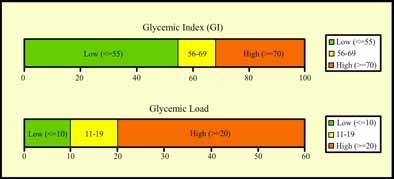Nutrition
Hi, everyone! As the creator of Regan MOVES, I would like to take this opportunity to speak with you about how nutrition can directly impact our pain and energy levels. It is my core belief that with chronic conditions, we can have our health. Reducing inflammation can be a key factor in reducing pain within our bodies. Eating right and exercising in a manner appropriate specifically for you can help reduce inflammation. It can empower you with skills to protect your body from the overproduction of auto-reactive, or "auto", antibodies. Reducing the number of auto-antibodies can result in decreased inflammation, which can directly decrease pain that is often associated with inflammation. Here is an established, confirmed strategy of eating that can help reduce inflammation in the body and increase energy. Combined with exercise, these principles can help you enjoy a full, satisfying life. In fact, following these dietary recommendations is a good idea for everyone, including those without chronic conditions. These methods have been shown to increase energy and decrease pain as shown in the references provided. Following these methods can also contribute to weight loss, optimizing your exercise routine.The Plan
The following information shows the relationship between inflammation and food. I have improved my quality of life, and want to show you technical explanations of how this has occurred. As such, below are lists of medical references, research studies, and other publications that support and explain the ideas described. You may want to add these references to your bookshelf. Stay tuned for a print-out that you can download of the nutritional plan. I now would like to visit two key concepts:- The proportional relationship between food and inflammation
- The relationship between inflammation and pain
Introduction
The foods we eat have a direct effect on our blood sugar levels. Each time we put food into our mouths, we increase our blood sugar. It is a goal of this program to reduce blood sugar spikes within our body. By reducing these spikes in blood sugar, we stabilize our blood sugar levels throughout the day. This in turn stabilizes our energy level during the day.What I came to learn is key to potentially decreasing pain through diet. And that is: as our blood sugar spikes, so does our level of cellular inflammation [Recent Advances In The Relationship Between Obesity, Inflammation, and Insulin Resistance.]. See also: [Hyperglycemia-Induced Production of Acute Phase Reactants in Adipose Tissue]. Therefore, a low-sugar diet can be thought of as a "low-inflammatory", or "anti-inflammatory diet". An anti-inflammatory diet can help reduce the intensity and frequency of pain that we may feel during a day. That is because as the blood sugar "spikes" level out, cellular inflammation is reduced.
I like to think about it this way: inflammation in the skin can be seen in the form of acne, redness and swelling. And many chronic diseases also involve inflammation. However, the inflammation in chronic disease is often cellular - it is not seen by the naked eye. See "cellular inflammation": [http://www.inflammationresearchfoundation.org].
As inflammation within the body decreases, the symptoms that can be associated with inflammation, including pain, can also drop. A must-read is the link between inflammation, pain, and chronic disease: Center for Integrative Medicine. See also: Definition of Inflammation.
Coming soon, I will post a document for download discussing the mechanism by which this process works. It includes publications by the American Journal of Medicine.
The Gist of It
Eating an anti-inflammatory (low-sugar) diet can help reduce pain associated with inflammation.How do we do that? We learn the glycemic index value of each food we eat.
How to Reduce Inflammation
I follow an anti-inflammatory, or low-glycemic index diet. This regulates blood sugar.What made the difference: For 30 days, I devoted myself to eating foods that were "low" to "medium" on the Glycemic Index Chart. It made a huge difference in increasing my energy. Having more energy allowed me to exercise. I had to develop a way to exercise while having chronic pain. As a result, Regan MOVES was born. Regan MOVES allowed me to move without hurting, and increased my muscle strength. As a result of exercising, my pain was reduced. It changed my life. The long-term effects of exercise are anti-inflammatory and that's why the program works. Once you become strong and enjoy reduced pain and increased energy, you can modify your diet to what works for you. This is something that I recommend to everyone, and you can use these tools to develop your own path for maintaining a healthy exercise and dietary lifestyle. Other wonderful things happened after my pain went down. My stress and anxiety decreased too, and I became more accepting of the world around me and a happier person. I then simply realized that I deserved to take care of myself. This journey brought about a sense of power. I highly recommend that you go to the Glycemic Index Chart and do your best to eat low to medium-grade GI foods. Do it for 30 days, start exercising, and watch a healthy, happier life unfold.
Foods I Recommend
- If you love rice: replace it with Quinoa and Barley.
- If you love pasta: replace it with Brown rice pasta.
- If you can't live without white, or even wheat bread (even whole grain bread can be high on the glycemic index scale): eat Rye bread and rye crackers. Delish!
- If you'll go crazy without white sugar: Agave! Agave is not necessarily "low" on the glycemic index chart, but it is lower than sugar.
- So, if and when you have a sugar craving, go for the plant syrup. It's a much better alternative to sugar and, in my opinion, to artificial sweeteners.
- If you'd go nutty without peanut butter: eat it anyway - just don't buy roasted, and make sure it is "natural". Almond butter is a delicious alternative.
- Use turkey to replace red meat. The fats within red meat can increase blood cholesterol.
- Buffalo meat is a wonderful alternative to red meat.
- If you have to have oil - the healthy oils are beneficial and can help reduce inflammation - Olive, Sunflower, and Grape Seed.
- If you must have butter - reduce it by a third, or eliminate it, and see above point!
- If you need your carbs: Lentils, a starchy food, are filling and can give us that carbohydrate "fix".
- If you like your potatoes: Sweet potatoes are lower on the glycemic index chart than are white potatoes.
- If you need some spice: Blueberries and cinnamon add a wonderful aspect to your morning bowl of oatmeal.
- And yes, I recommend eating oatmeal over typical breakfast cereals. Oatmeal can help reduce cholesterol and is a low-GI food! Buy steel-cut if you like, which is even lower on the glycemic index chart than quick-oatmeal.
- Eggs: gotta have it. They are a wonderful source of protein, and since food cholesterol does not contribute to blood cholesterol, an egg a day keeps the doctor away!
Contact me for more information, and for diet and exercise consultations personalized for you:
ReganBirrJointSense@gmail.com
720 470 8049
Background
As we have discussed, there is a process by which inflammation can be reduced through how and what we eat. It pertains to a "cascade of inflammation" - how inflammation begins, builds, and then causes damage, and how eating certain foods and avoiding others can help reduce, or prevent dramatic spikes in, cellular inflammation. Here's how it worked for me, and why it is applicable to chronic conditions including arthritis, MS, Parkinson's, chronic fatigue syndrome, fibromyalgia, Diabetes, and lupus. Common to all autoimmune diseases is inflammation, says Dr. David Roth, director of clinical development at Glaxo SmithKline, the co-developers of Benlysta. Auto-immune disease, in all of its forms, including lupus, multiple sclerosis and rheumatoid arthritis, is an inflammatory condition. An acceptable amount of autoreaction within the body is normal. B cells are responsible for creating the sequence of events whereby autoreactive antibodies are produced. B cells are also responsible for creating a protein called BlyS. Certain levels of BlyS are acceptable and indeed necessary for regular healthy function. However, when too much BlyS is present, these autoreactive cells tend to live longer and proliferate more profusely. The result is more, longer-living and stronger autoreactive cells. And when the body attacks itself, inflammation, on a cellular and macro level, occurs. So, we are all working towards reducing inflammation, which can have such harmful effects on our bodies. Since diet can help reduce inflammation, diet can help people with chronic conditions feel better. Decreasing inflammatory foods can be helpful for other conditions as well. Eating a low-sugar diet can help greatly contribute to a reduction in blood cholesterol levels. When I began my anti-inflammatory diet, my cholesterol levels decreased by a third. Of course, lowering one's blood sugar levels can also significantly impact weight loss, another side benefit I was happy to experience. There are many additional compelling reasons to reduce the inflammation in our bodies. Inflammation is linked to atherosclerosis (hardening of the arteries), the principal cause of heart disease and stroke. (Fat tissues also increase insulin resistance, leading to type 2 diabetes. Ref.: "The G.I Diet" by Gallop (p. 135).Additional References
Examination Of The Relationship Between Sugar And InflammationExploration Of The Relationship Between Foods And Reduction Of Inflammation And Pain
Chronic Inflammatory Nature Of Lupus And The Relationship Between Inflammation And Pain




